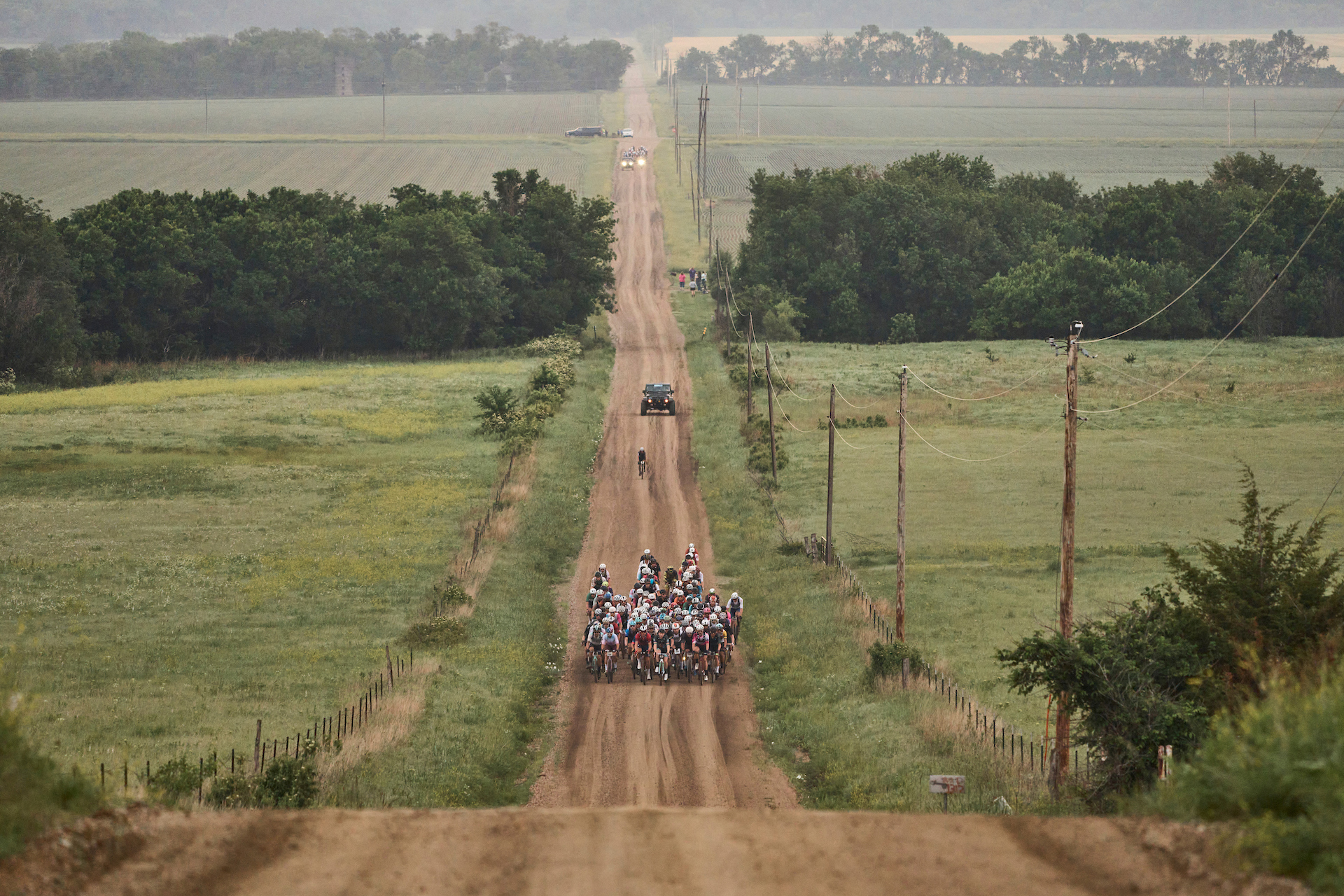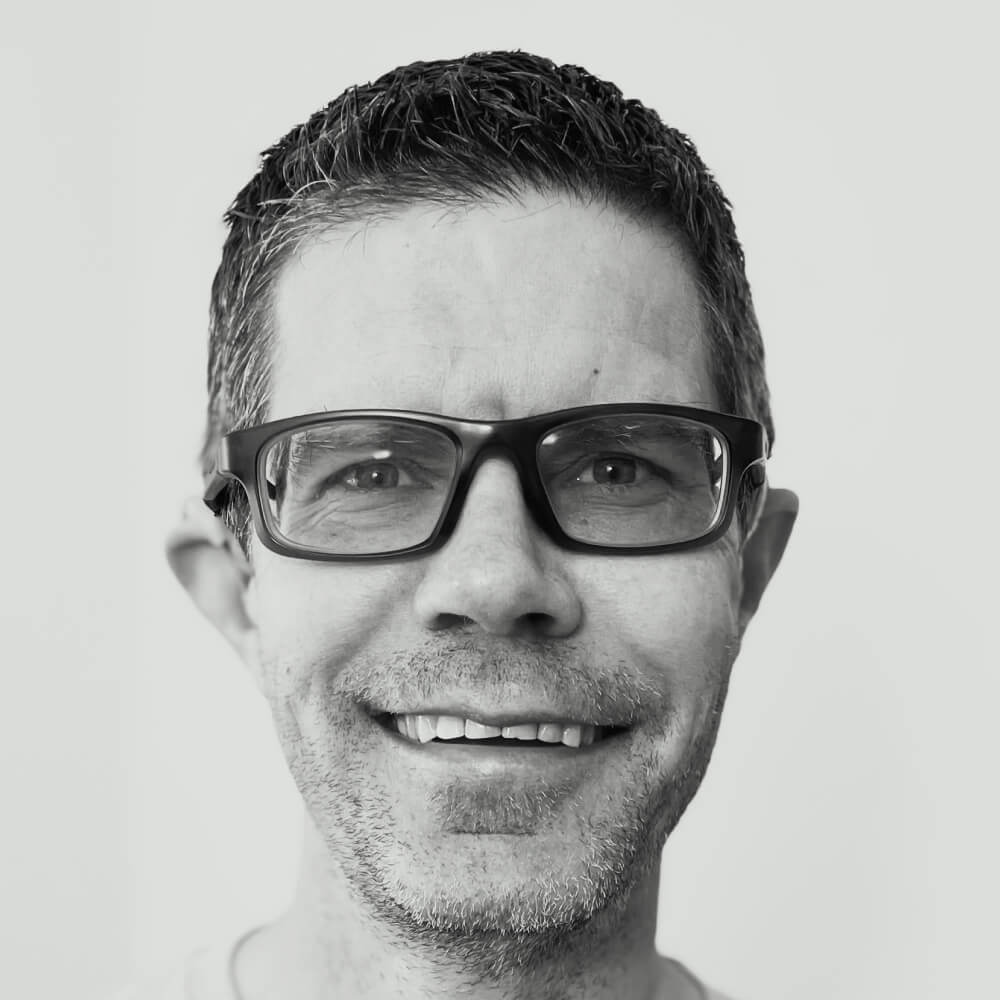Recently, Life Time, the promoters of gravel racing’s richest series, the seven-race Grand Prix, announced its first-ever European event. Heathland Gravel, scheduled for August 9-11 in Maasmechelen in Belgium’s eastern Limburg region, is new territory for Life Time in several ways. Along with being its first foray into Europe, Heathland marks the first Life Time cycling event the company is not running itself; Heathland is a partnership with Belgian promoter Flanders Classics. Finally, Heathland also represents the first-ever qualifier event for Unbound Gravel.
That’s a big shift. Gravel racing’s biggest event is, for any racer outside the elite invitation-only Grand Prix field, currently only accessible via lottery, with few exceptions. And that lottery is a hot ticket, even with 1,200 spots for the 200-mile distance and roughly 1,400 for the 100-mile event. Heathland represents, for 25 top age-group finishers in the 160 km distance, an automatic entry for the 2025 Unbound; an additional 25 spots will be distributed randomly to Heathland finishers. (The general lottery for the 2024 Unbound event closed in January.)
Anyone familiar with Life Time’s other cycling events will certainly notice that structure is almost identical to the qualifying system for the Leadville Trail 100, the company’s signature mountain bike race. The Heathland news passed quietly for the most part, but it represents a major shift for Unbound. We caught up with Kimo Seymour, Life Time’s president of events, to learn more about how getting into Unbound will shift in future years, the company’s plans for events in Europe and North America, and the future of gravel racing in general.
This interview took place on February 21 and has been lightly edited for clarity and length.
Escape Collective: Heathland is the first-ever qualifier for Unbound, correct? Domestically or internationally?
Kimo Seymour: It is. It’s the first one we’ve done similar to what we did years ago with the Leadville race series, in creating qualifiers for the 100 Bike and 100 Run. We decided we would start to put a plan in place, and it just happened that we were looking also looking at opportunities and ways to expand internationally. And I don’t think we can scale by going over and setting up an office and hiring a bunch of people and trying to figure out how to put on events in Europe. It just doesn’t feel like it’s the right way to approach it. So we explored a licensing partnership and went looking for, you know, the best of the best. And I mean, Flanders Classics, obviously [an] unbelievable organization, they know how to put on amazing events. It was just a natural fit.
EC: And putting on events, culturally, it’s a different thing in Europe as well: what works, what doesn’t, who rides them. It’s just a different creature. So was the sense that Flanders [Classics] understands who that audience is natively?
KS: Exactly. Business-wise, culture-wise, everything about [events] is so different over there. You know, I just didn’t expect that we would be able to go over there and be successful, any more than they would be able to come over here and be successful. The events are just different, you know; what works here, probably doesn’t work there.
The thought is, they definitely want to try and emulate some of the experience that led gravel racing to grow here; they really haven’t been able to emulate what we do over here and gravel and kind of the culture around it: the experience, the party, the camaraderie, the community. [Europe is] much more “show up, competitively ride your bike, and go home,” and I think they want to try and emulate what we have. And so it’ll be a fun experiment. And the goal with Flanders is that they want to test it this year, and then hopefully expand. And so our partnership is such that we can have multiple qualifiers over the coming years.
EC: So this is more than just white-labeling an event with Flanders Classics, from the sounds of it. You’re getting their expertise about what works in Europe, and they’re getting your expertise about how to make an iconic gravel event, with the inclusive, welcoming culture and all the stuff we know from gravel racing in the U.S.
KS: Exactly. We try to kind of share expertise across the pond, if you will. As an example, we have a couple of people from our team going to the Tour of Flanders. They’ll likely ride the citizens’ ride the day before and then experience the race itself. And where they want to learn about the mass participation side and the experiences we create, we in turn, want to learn at the professional level. And this ties more back to the [elites-only] Grand Prix, like the level of production and the quality and what they do around the professional side of the sport. We want to learn from them, we’re trying to level up, you know, across the board with the professional level of our events as well. That’s probably where we have the most to gain.
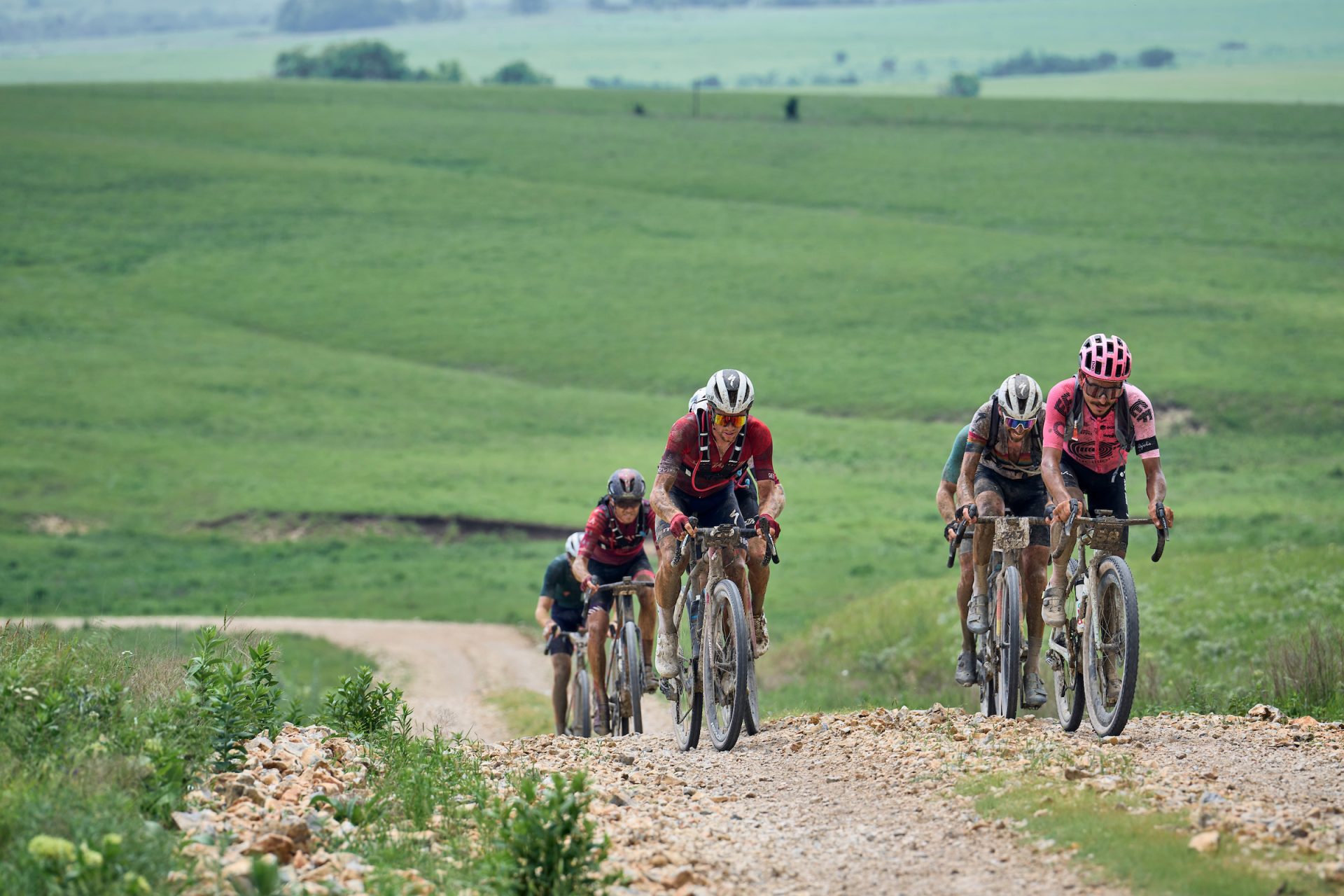
EC: So I want to go back to something you just said, which is that while this is the first qualifier, you hope for there to be more. Obviously the lottery system for Unbound is very competitive. And it sounds like you want to create more qualifiers for Unbound. Do you think that will be primarily international, or would it also include domestic qualifiers, like the Leadville series has?
KS: Yeah, we are going to expand here domestically. We’re working on the plan for that now. But yes, the plan is to expand that domestically and create that opportunity for people to get in. I was part of helping to create that with the Leadville race series about 12 years ago. The best of the best in every age group qualify and get a slot and, and if they don’t take it, it rolls down to the next person in the age group. But similar to how Ironman does it, we’ve always had half of the entries that come from a qualifier; we allocate them based on the number of athletes in each age group. And we’ve also always had a lottery at the qualifying events for anybody that finishes. So you finish, you have a chance to throw your name in.
Obviously, the likelihood of getting in via a qualifier is much higher than the likelihood of getting in through a lottery. And so I’ve always felt strongly that I want everybody that shows up and does a qualifier to have an opportunity to still get in and race an Unbound or a Leadville, because I just feel like that’s the bread and butter of what we do. I don’t ever want it to be just purely the most elite of the elite, the front of every age group and the fastest of the fast. There needs to be an everyman component to it.
EC: That system has been in place now with the Leadville series for quite some time. And do you feel pretty confident that you’ve arrived at a place where the competitor constituency is happy with that, that they feel like that balance of qualifiers versus lottery is working well?
KS: I do. Well, the people that don’t get into the lottery might disagree. What we probably need to do, Joe, is we need a system where if you apply for the lottery so many times – because believe it or not, we use a randomizer to pull those names, and we hear stories about people that have applied for the lottery for, like, seven years and not gotten in – and so we need to come up with a system where, Okay, if you applied seven times, or whatever it is, we should be smart enough to catch that and say, “Gosh, this person really wants to do it.” But I feel like we’ve found a decent balance between qualifiers and in the lottery.
The demand or the requests that we get most often is that we’re not very far East. I think the furthest East is probably Bentonville [Arkansas]; we added a qualifier with the Little Sugar mountain bike event last year. And I think we need to go further East and so we’re actively working with someone who’s helping us scout venues and courses right now to add a qualifier in 2025. Somewhere in the east-southeast. So we need to grow there on the Leadville qualifying side. And then we’ve got some forthcoming plans on as I mentioned on the Unbound qualifiers.
EC: Correct me if I’m wrong, but for the Leadville qualifier series a number of those are for the same year as the event. So you qualify in 2024 for the 2024 Leadville 100, correct?
KS: That’s correct. I mean, we give people the option to use it that year or the following.
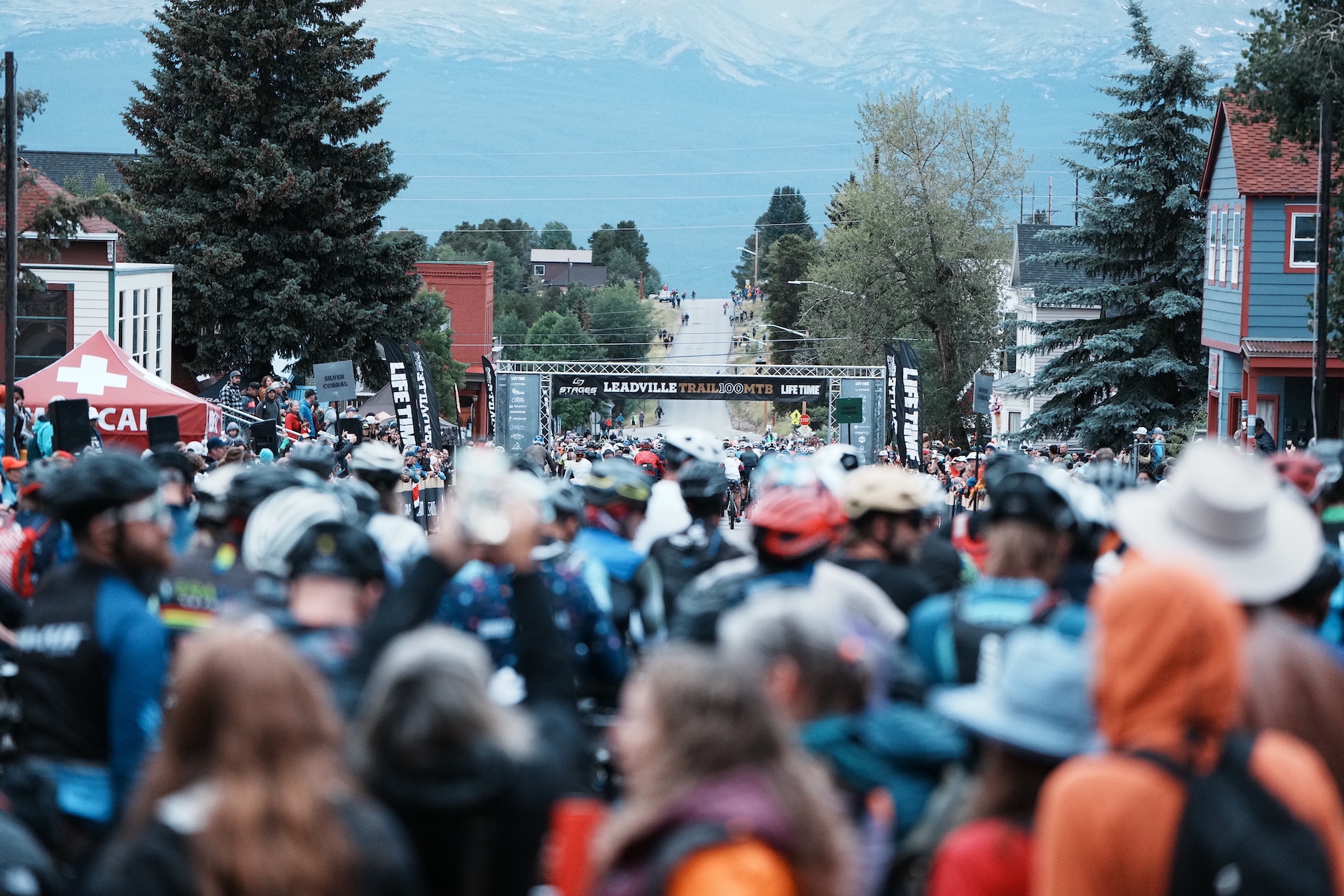
EC: That brings me to the calendar and Unbound qualifying. The Sea Otter Fuego XL is the only event that’s pre-Unbound right now, at least on the 2024 calendar. So what might we see in the coming years for calendar changes there to potentially add more events that would serve as qualifiers, or even just add events to sort of flesh out the Grand Prix series?
KS: So, as far as adding events, the only thing we’ve got at least in the planning process right now are additional mountain bike races to potentially be qualifiers for Leadville. The interesting thing with Sea Otter is we’re a little limited on gravel. Because within Fort Ord, if you’re familiar with that [a decommissioned military base around the Laguna Seca race track that was used as an artillery range – Ed.] , there’s a whole bunch of the area within Fort Ord that is still designated as unexploded ordnance restricted areas. So you’ve still got bombs out there from back when it was a target range in World War II.
They are slowly but surely clearing parts of Fort Ord, but I think we’re still probably a couple years away from having full access. We did finally get enough gravel this year to put together a real gravel race, but the last couple years the gravel race has done the exact same course as the mountain bike race, almost all single track. And so this year we have enough [fire road] to have a true gravel race. But I think it’s only going to end up being somewhere between 40 and 50 miles, and to be a qualifier for Unbound, we need to get that up closer to 100 miles. So we’re still a couple years away from, say, something like a Sea Otter having an Unbound qualifier, because we just don’t have enough space. We don’t have enough real estate there.
We don’t have any plans to add any more gravel events in the portfolio unless an acquisition opportunity came along. And you’ve probably seen the proliferation of gravel events. Let’s be honest, it’s a fairly low-barrier-to-entry type of event to put on. You can find a little town in the middle of Nebraska that’d be happy to have 500 people show up for the weekend, right? And there’s more gravel roads than anybody could count. So I feel like there’s such a proliferation of events. But we’re already starting to see a little bit of natural consolidation. Because it’s tough to make money in 300-400 people in a gravel event. And I think we need to see a little bit of consolidation. But we probably won’t add any new events, unless we do an acquisition here in the next year or two.
EC: Do you see that the overall gravel calendar, at least domestically here in the US, is becoming somewhat saturated?
KS: I think it’s gotten very saturated. I think most events, at least participation-wise, if you just look kind of across the board, most of them have stagnated a little bit, leveled off. There was such a spike there for a few years. We’re fortunate enough that most of our events sell out each year, and we kind of hit our capacity. In the gravel space, I think the only exception to that is The Rad. And that’s one of our newer events, but we think that one’s probably going to sell out this year, too. So, we’re fortunate enough, where we’ve been able to fill up our events.
And I think that’s a side effect of the Grand Prix. The events that are in the Grand Prix get so much attention. We saw a big spike last year with The Rad by adding it to the Grand Prix. But back to your original question, I think, you know, we do look each year at it, like what events we could rotate in and out of the Grand Prix. This year, we decided to stick with the same seven, but I think next year, we’ll do some changes to shift it up a little bit.
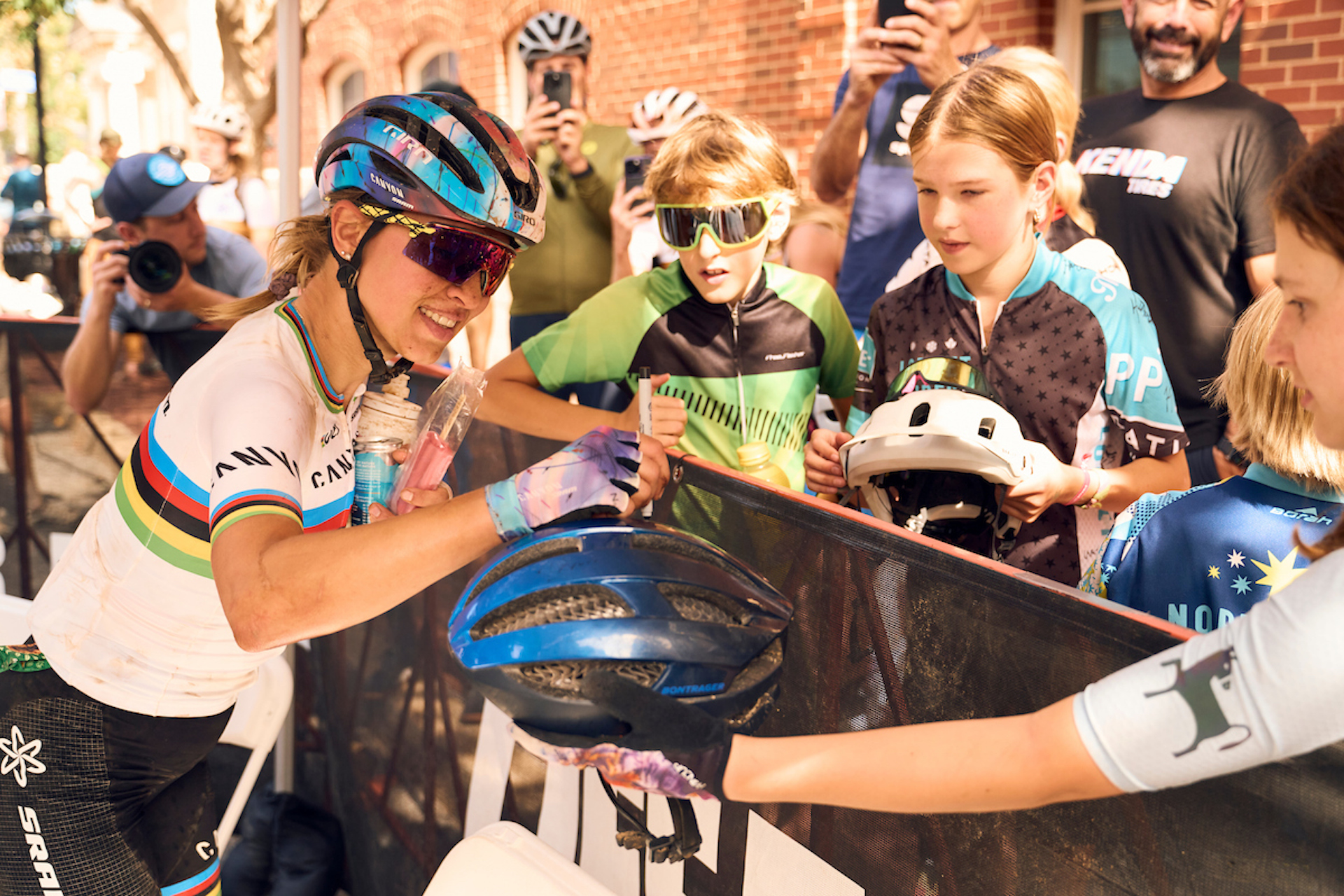
EC: What do you see driving that potential consolidation in gravel? Is it purely the economics of it, that it’s hard to make a living off a 400-person race? Are there other concerns as well that will drive it?
KS: You know, I think it could be two things. I think it could be just pure economics. I think there are some smaller event producers, more grassroots, where 300 people is a lot of work for not a big payoff, and I think so we’ve already seen some events go away.
The other thing I think that you have to be careful about is you see something like what my good friend, [SBT GVL promoter] Amy [Charity] is going through in Steamboat [Colorado], where some communities will turn on the event. They’re just not used to having cyclists, you know, on their roads, especially if it gets really big and you get a lot of cyclists coming to town and riding those roads a lot and creating a lot of congestion for the ranchers and the farmers and the people that use those roads to make their living. That concerns me that we have to stay really, really engaged in the communities where we have events. I could see some events might find that they fall out of favor with the locals in the future. And so I think we all have to be really careful about that.
EC: Is that partly a function of field sizes? Is there a sort of logistical upper limit as well on even a race like Unbound, where it’s never going to be 10,000 people or whatever?
KS: I think field size, definitely. But you know, we go up to north of 5,000 on Unbound, we have this year. That’ll naturally attrit to around 4,000 riders, because there’s just not enough accommodations. Emporia [Kansas] is also not quite as much of a destination, you know, per se. It has become a cycling kind of Mecca, but it’s not quite the destination that, say, a Steamboat or Bentonville is. And even in a Bentonville, you get out into some of those rural roads going up, you know, kind of north toward Lake of the Ozarks and whatnot, and all of a sudden, there’s a lot of people riding bikes on those roads. And, you know, we do worry that we don’t want to fall out of favor with the locals.
EC: One of the other things that I’ve seen over the past few years as a lot of new events have come on the scene is that there is a pretty wide range of rider experiences, in particular, on the aspect of safety. Do you think that that is going to become a factor in the consolidation, that riders will look at events and just say that either it wasn’t a satisfactory experience for the money, or even, “I didn’t feel safe in that event”?
KS: You know, I think it certainly could, especially as the events get more and more competitive. That’s always a concern that riders will take risks that are a little unsettling. Because, let’s face it, we still don’t have the ability on most of these events, or any of these events, to close roads. And so you’re dealing with open traffic. Being out there on course, how some of the athletes ride and take blind corners, I do I think the answer is yes, it’s a big concern. With bigger fields, more riders are taking more risks on open roads with cars. It is scary and so yeah, safety I think certainly weighs into the decision-making of the consumer.
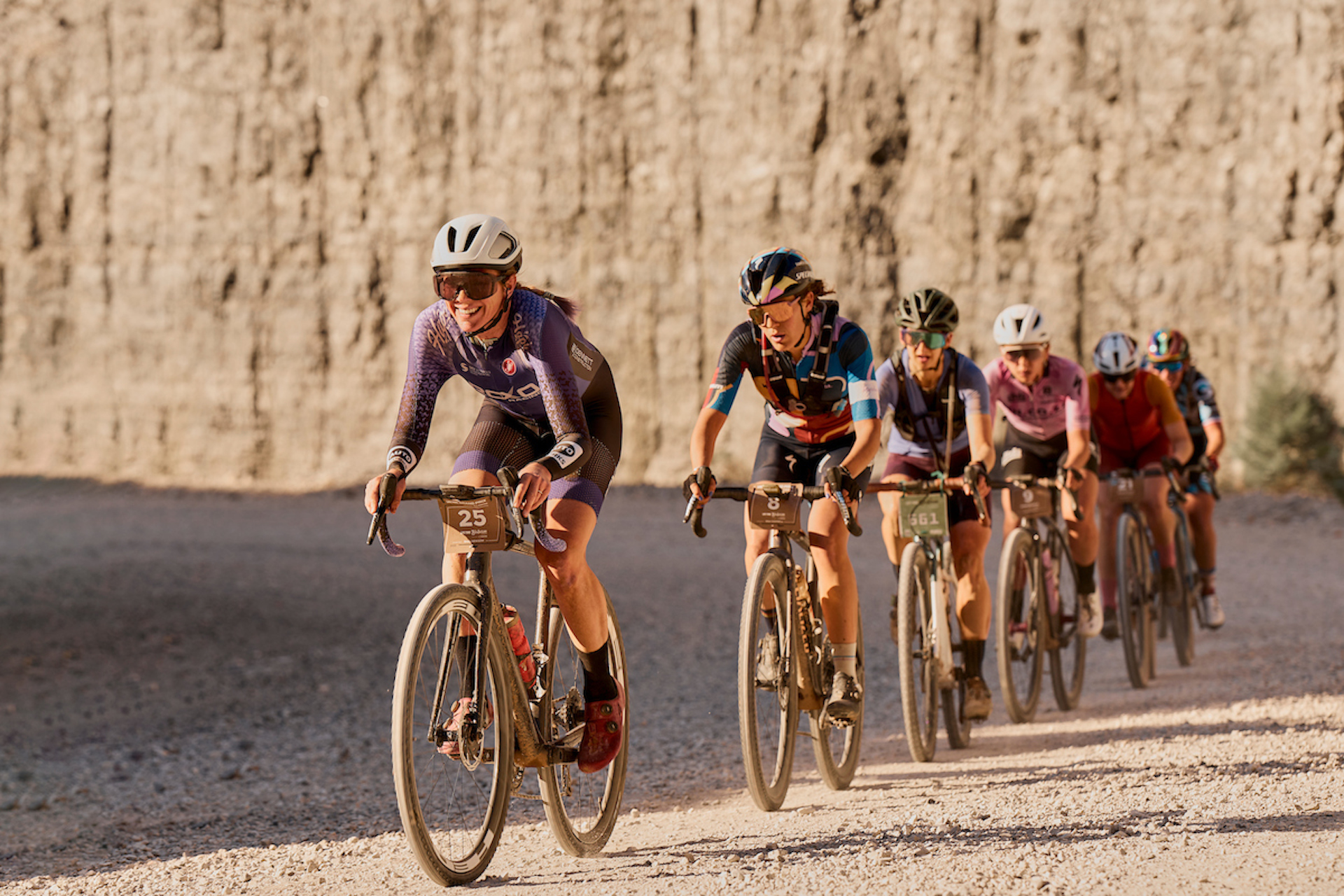
EC: So how do you manage that with events like Unbound where you have large fields and yes, you are dealing with a very competitive event where it’s very easy for people to sort of get yellow-line blindness? How do you deal with that other than like course marshals at particular intersections or police support to keep a lid on the safety aspects?
KS: You nailed it; it is marshals and we’re fortunate enough with an event like Unbound that it’s probably 99% gravel, so you’re not on roads with cars. Have you been to Unbound?
EC: I have not.
KS: It’s very open and visible, you know, for the most part wide-open range land. So you’ve got great sight lines to traffic and whatnot. We have heavy, heavy marshalling at the intersections. I’m literally personally going out there, I’m going to personally drive that course to understand every single intersection where we need marshals to make sure we don’t have [problems] anywhere automobiles and bikes come together, any sort of conflict. It’s super important that we keep all crossings safe. [No riders have been killed in crashes at Unbound; in 2022, a veteran gravel and ultra-distance cyclist named Greg Bachman died during an informal pre-Unbound warmup ride after he was struck by a driver in a pickup truck who failed to yield at a four-way stop. -Ed.]
That’s less of a concern at something like Unbound because you do have good sight lines but Big Sugar, that’s one where a lot of those roads in Northwest Arkansas, you get out of town pretty quickly there are really only one-lane roads. And hunters are flying along at 25 miles an hour on some of these roads. It’s really a concern. So we have a lot of marshaling at intersections with the elite riders and more escort motos. I think we will have tripled the number of motos this year [from last]. At the faster end of the field where you’ve got bigger packs, and they’re going a lot faster, we’ve got to make sure we’ve got good coverage, especially at the front of the race that we’re clearing the roads and clearing the traffic as they come through. That is a big, big change.
EC: Talking about that front end of the Grand Prix, Life Time expanded the prize money pool, and slightly narrowed the fields from last year from 35 to 30, for the men and women each. What was the sort of strategic thinking behind going narrower or deeper? And where do you anticipate that will lead for that elite level of competition?
KS: Strategically, let’s just say we wanted to increase the prize purse in the hopes that we can continue to increase the prize purse as we grow sponsor support. So, you know, obviously a bigger purse, hopefully, it draws an even more competitive field or interest from a more competitive field. It’s been suggested by some of the athletes that we could actually drop to, you know, as little as 20 to 25 athletes on each side. You’ll see, each year, the bottom, say, five have kind of dropped out by the end of the year. And in many cases, you probably knew at the beginning of the year who those athletes were going to be.
And so if you think about the idea of keeping it truly competitive, and the elite of the elite, it’s a balance, because on the flip side, we want to provide a development opportunity for the younger riders to have a chance to come out and shine. The selection process is getting probably easier each year, because there’s just more data. It’s much more objective based on results. But we want to create that pipeline, that opportunity for the younger riders that don’t quite have the results yet. So I think we want to limit it maybe to 25, maybe 20. We’ll see how 30 feels this year.
EC: But you do want to keep that space open for riders who are developing or who simply haven’t had the opportunity to shine on a particular stage to do so.
KS: I actually talked about that on a podcast this morning, what Alexey Vermeulen is doing with his Phase II project. We’re working with him on creating some opportunities for some younger up and coming riders; not to do the full Grand Prix, but to do four of the events, maybe the Unbound 100, shorter distances. Hopefully it’s creating a pathway, and we’re kind of exploring what the development pathway looks like for younger riders. Alexey came up with the idea, and we’re working with him on that and that spurred some new ideas.
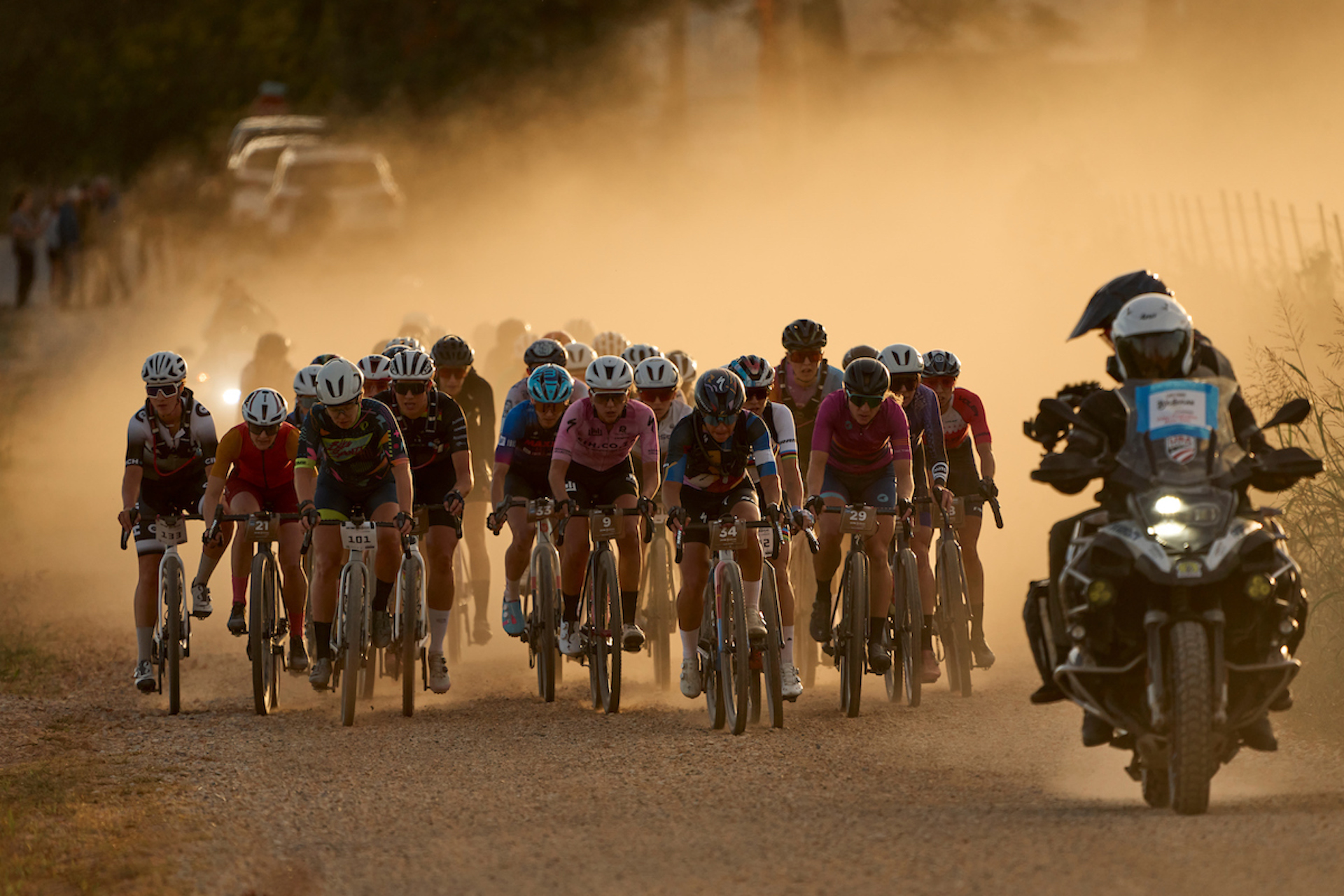
EC: I wanted to ask about other changes to the Grand Prix. There will be separate start waves now for elite men and women. I know that it probably was the product of a lot of discussions. So I’d love to learn more about what led to that. And then from there, how does Life Time intend to use its position as one of the preeminent names in gravel racing to lead on the evolution of rules and norms?
KS: I think the separate start for the women really came from the women. They’ve been asking for it. So we added it in a couple more events this last year. And then we made the decision to do it at all the events in 2024, and to create even more separation from the age groupers, behind the elite women. And that is the next step in what I think ultimately will be going to a day where we have the elites racing one day and then let’s call it the age groupers racing on a separate day. We’re exploring it for some of the events even as soon as 2025.
But in the interim, we’re doing our best to try and create a race within a race for the women where their race is not impacted by all the age-group athletes – or we’re minimizing the effect, I should say. It’s a step towards getting the women their own race. And ultimately, I think that’s what they want. It’s funny in a “be careful what you ask for” way, because some of them, when we said, “Okay, well, what if we did full on? You know, what if we did full-on separate starts for the women and no drafting off of any men throughout the race and made that a rule?” And some of them were like, “That’d be great. Except for Unbound.” Well, you can’t have it both ways.
There are some racers that I think they enjoy the old kind of grassroots gravel where it’s part of the game; if you happen to have someone come by that you can jump on their wheel and ride for 50 miles, then you got lucky that day. But we’ve been consulting with a group of elite Grand Prix women. And in the end, they all want no drafting for the women off of men, and they want their own starts.
EC: That’s a big shift. And in a race of Unbound’s size and scope it also feels like, in some ways, it’s almost impossible to police. Like, if you put that in place, how do you decide what’s drafting and what’s not? How do you catch people breaking the rules, or handle controversies arising from something that somebody says that they saw out on course, et cetera, et cetera?
KS: Yeah, you’re right. And that’s where we have engaged a number of the elite women in conversations about it, and then working on what that could potentially look like. And if we decide to do that, it’s not going to be perfect. You can look to triathlon and see what Ironman has done. It’s just that everything about gravel has been so anti-rules, just, “go and ride your bike and have fun,” right? But the reality is, it’s getting competitive, we’re reaching a point where people can be professionals, and with that comes money. And with money comes, unfortunately, there have to come more rules to keep it fair. And so, I joke that, you know, we’ll be the ones that ruin gravel. But in the end, hopefully we’ll have a lot of men and women that are able to make a living riding their bikes.
EC: And we do joke about that a little bit and that groan-inducing phrase, “the spirit of gravel,” but at the same time, yeah, Life Time does occupy the most prominent spot in gravel racing in the US and I’m curious what you feel is the company’s responsibility to help keep that spirit intact as the sport evolves and grows.
KS: I love all the talk about the spirit. The problem is nobody can really define it. Everybody has a different idea; it’s so subjective. I won’t even try to define what it is, I will just tell you that around 30,000 people are going to do our cycling events this year, if you add them all up.
What’s interesting about our businesses, every single one of [those events] is a different brand, different name, and very unique experiences. I’ve never tried to create an Ironman-type of experience where it’s cookie-cutter. They can go town to town to town, it looks the exact same event every single weekend, right? Nothing changes other than the course is a little different. It’s the exact same experience. They’re really good at that. What we’re really good at is 25 events, every single one of them is unique, fun, crazy, different – from what the expo is like, what the race is like, what the post-race party is like, how you engage in the community where we have the events, the things that we have going on in the communities. Every one of them is different. And that’s where I think it’s our responsibility to maintain that unique, totally different, totally entertaining experience. People love to cast stones because we’re the biggest one out there but come to one of our events and I think you’ll go, “Wow, it’s a pretty kick-ass experience.”
EC: Last question – as you expand with the partnership with Flanders Classics, this sort of brings about a – I don’t want to call it a clash – but brings it more in contact with the UCI and World Gravel Series which, historically, for the short time it’s existed has been primarily in Europe. As that happens, what do you feel is the value in Life Time staying independent from the UCI versus becoming a UCI-sanctioned race or series? And what would change that?
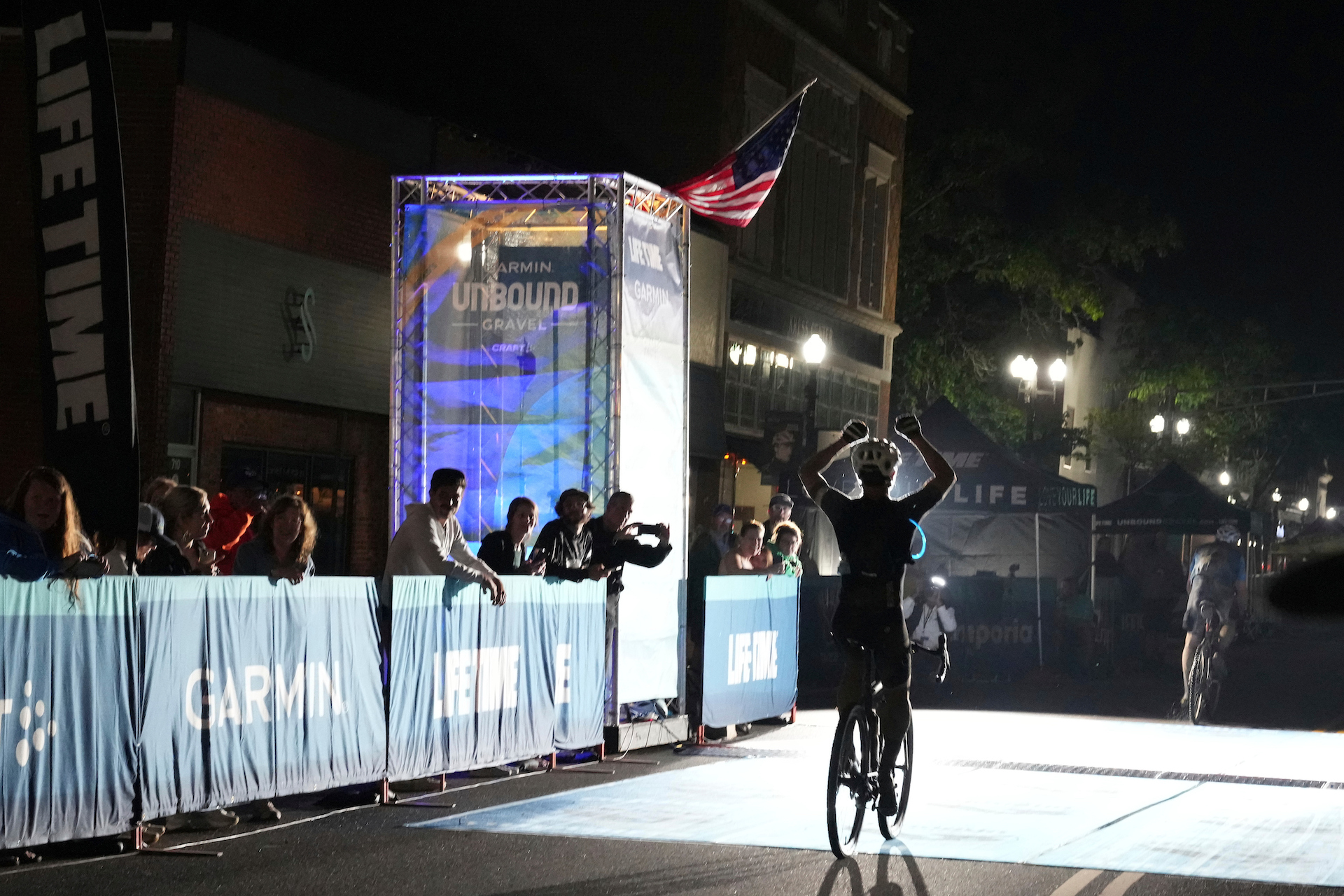
KS: We were a part of some calls a few years ago with the UCI and USA Cycling about potentially hosting a gravel Worlds when they were first exploring the idea of the gravel World Championships, and we were on calls with a bunch of other event producers around the country. Everybody kind of pointed their nose up at them and said, “No, we’re not interested in working with you.”
I am a big believer that [World Gravel Series} is good, that they will make it work. I think we’ve seen it just from two years ago to last year, that gravel World Championships, they took their game up. I even sent somebody there to watch to be able to experience and be a part of it, and see what they’re doing. I won’t ever doubt the UCI, they know what they’re doing. And so to me, if we’re smart, we learn from what they’re doing. I’m sure they have sent people to some of our events to learn what we’re doing. There have been some people that have shown up at some of our events. And I wouldn’t ever rule out that there’s a way that we could collaborate together and work together. I don’t know what that looks like; they’ve never approached me.
So that’s a long-winded way of saying I think that ultimately, they will do a good job. I think they have yet to show that they are experience-focused like we are; they’re much more race focused. That’s just what the UCI does, it’s the culture of what they do. And I think that while we get a lot of press for the Grand Prix, you know, our true heart and soul is in the experience and for the age-group athlete and everyday rider that’s out there. So we’ll continue to focus on that, we’ll continue to try and differentiate and be really unique and have just fun, kick-ass experiences. And I’m sure they will continue to stay focused on the pointy end of the spear.
It’ll be interesting to see if they ever approached us about working together. But I’m open-minded that, if there was an opportunity, and we felt it was good for the sport, good for the pros, good for our events, I’d be open to working with them. Same with USA Cycling. You know, I’m good friends with Brendan Quirk. And we talk frequently and have a healthy respect for them. I think, you know, they should kind of live in the realm of that Olympic development. That is where they should focus, and national championships, different disciplines. And let us kind of focus on gravel and mountain biking.
What did you think of this story?
